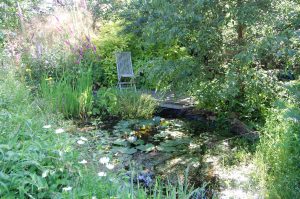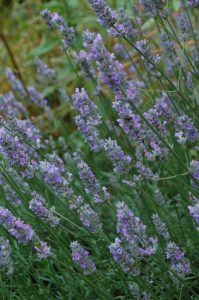Gardening in tune with nature is hugely rewarding and is a win: win situation all round. In this post I cover the best ways to make a wonderful garden for both you and a whole range of creatures.
As your garden bursts into life this spring, it’s the perfect time to make positive changes to attract wildlife
Creatures like birds, butterflies, bees, mammals and amphibians are fascinating to watch, and most wildlife is hugely beneficial to the gardener, repaying you by keeping pests under control and pollinating crops and flowers. But gardens are now also incredibly important as life support systems for wildlife. We’re bombarded by depressing news of climate change, habitat destruction and plummeting populations of once-common creatures – but every gardener has the power for positive action to help redress the balance.
Collectively Britain’s 23 million gardens equal the area of Norfolk Broads, Dartmoor and the Lake District, so even small actions can have huge results if we all do something.
Enticing wildlife doesn’t mean a jungle of mess and nettles, as many people mistakenly believe. A wildlife-friendly garden combines the key elements needed by all creatures, like water, food and shelter, with thoughtful plant selection and sympathetic management so your garden looks fabulous too. This approach was thoroughly confirmed in a recent BBC TV programme The British Garden: Life and Death on Your Lawn, which surveyed a variety of ordinary gardens in the same road and found that by far and away the best with an impressive 683 species was the ‘managed’ one with a wide range of plants, though not immaculately tidy. And it was the overgrown one which had the least diversity.
My top 10 tips
- Water is the best ever wildlife magnet as everything needs water to survive. Even a simple bird bath is a top attraction, but a pond is best of all. It will attract frogs, toads, perhaps newts, and a host of fascinating insects. Birds come to bathe and drink too. Do make sure there is easy access via a pebble ‘beach’ or similar.

- Choose flowers rich in nectar and pollen to feed butterflies, moths, bees and other insects. Although there is a vast range of plants available, from an insect point of view so many flowers are all mouth and no trousers, so to speak, as they lack pollen or nectar or have double, complicated flowers that are impossible for insects to enter. Top choices include butterfly bush (Buddleja); hebe, scabious, blue globe thistle (Echinops) and verbascum. Most herbs are nectar-rich too, including lavender, catmint, fennel, marjoram, hyssop and thyme.
 Many good wildlife-attracting flowers are annual – great for the budget-conscious gardener, as dozens of plants grow from a packet of seed costing a pound or two. Hardy annuals are easiest of all, sown direct where they are to flower. A row of towering sunflowers can march along the back of the border, where the seed heads can be left on as natural bird feeders. Azure blue viper’s bugloss, brilliant nasturtiums and pot marigold (Calendula) thread through the middle, while poached-egg flower makes a lovely edging.
Many good wildlife-attracting flowers are annual – great for the budget-conscious gardener, as dozens of plants grow from a packet of seed costing a pound or two. Hardy annuals are easiest of all, sown direct where they are to flower. A row of towering sunflowers can march along the back of the border, where the seed heads can be left on as natural bird feeders. Azure blue viper’s bugloss, brilliant nasturtiums and pot marigold (Calendula) thread through the middle, while poached-egg flower makes a lovely edging.
- Feed birds, all year round but especially in winter. Plant berry-bearing trees and shrubs for natural food: pyracantha, crab apple (Malus) and cotoneaster are favourites. Make a feeding station with different bird feeders and a range of foods to attract the widest variety of birds. Sunflower hearts are a favourite with my garden birds: although dearer than mixed bird seed, there’s absolutely no mess. Do clean feeders regularly using very hot water (no detergents) and wear gloves – as otherwise it’s easy to spread disease.
- Plant hedges instead of fences. Hedges link other habitats together and provide vital shelter and nest sites. Many hedge plants give food for birds and mammals too, particularly native plants like hawthorn, blackthorn and holly.
- Make the most of walls and fences and clothe them with climbing plants: fantastic for nest sites as well as hibernation places for butterflies, moths and bees. Good plants include honeysuckle, ivy and clematis that provide food for moths and butterflies, and pyracantha which can be trained against any vertical surface.
- Choose flowers and plants for every season. High summer may be when the garden hums with life and when we’re outside the most to notice it, but winter/early spring and autumn are critical, when creatures are just emerging from hibernation or stocking up on food to lay down reserves before winter. As the climate becomes ever more erratic, this can mean the difference between life and death.
- Make homes for wildlife, as simple or as extravagant as you like. Put up boxes for bats as well as birds, install a hedgehog home, and make insect ‘hotels’ such as bundles of dry, hollow stems or piles of leaves and twigs mounded at the base of a hedge. Cut back grasses and perennials in late winter or early spring, to provide shelter for creatures over winter. A rock pile or dry-stone wall is a top spot for insects, frogs, toads, even slow worms if you are lucky.
- Go chemical-free. Many pest, disease and weed-killers are indiscriminate, killing friend and foe alike. Bugs are food for other creatures, and given a chance the good guys will keep on top of the pests, saving you the hassle and expense. There’s now an extensive range of chemical-free products such as biological controls (using a living organism to target a specific pest, like slugs, whitefly or vine weevil) as well as traps and barriers.
- A compost heap may not be glamorous, but it is a fantastic wildlife ‘des res’ that teems with all kinds of life. Compost containers make cosy habitats for all sorts of insects and amphibians, maybe even hedgehogs and slow worms. Recycling your garden and uncooked kitchen waste into gorgeous crumbly compost is incredibly beneficial for the soil ecosystem too, and a good soil is the foundation for the wonderful pyramid of life in your garden.
-
Consider your impact on the wider environment and buy wisely. Choose peat-free composts (as peat is a superb wildlife habitat and a dwindling natural resource); look for wood/wooden furniture approved by the Forestry Stewardship Council (FSC) and avoid plastic wherever possible. It’s easy to think that just the small things you buy won’t have any impact, but I always keep one of my favourite quotes in mind: “If you think you’re too small to make a difference, you’ve never been in bed with a mosquito”.
Lots more information can be found on these websites:
http://www.wildaboutgardens.org.uk
http://www.butterfly-conservation.org
http://www.bumblebeeconservation.org.uk